Around about "The Tower" A walkers guide around the Tower of London England UK
East of the Aldgate pump is the 'East End proper; the heart of which is in the Greater London Borough of Tower Hamlets.
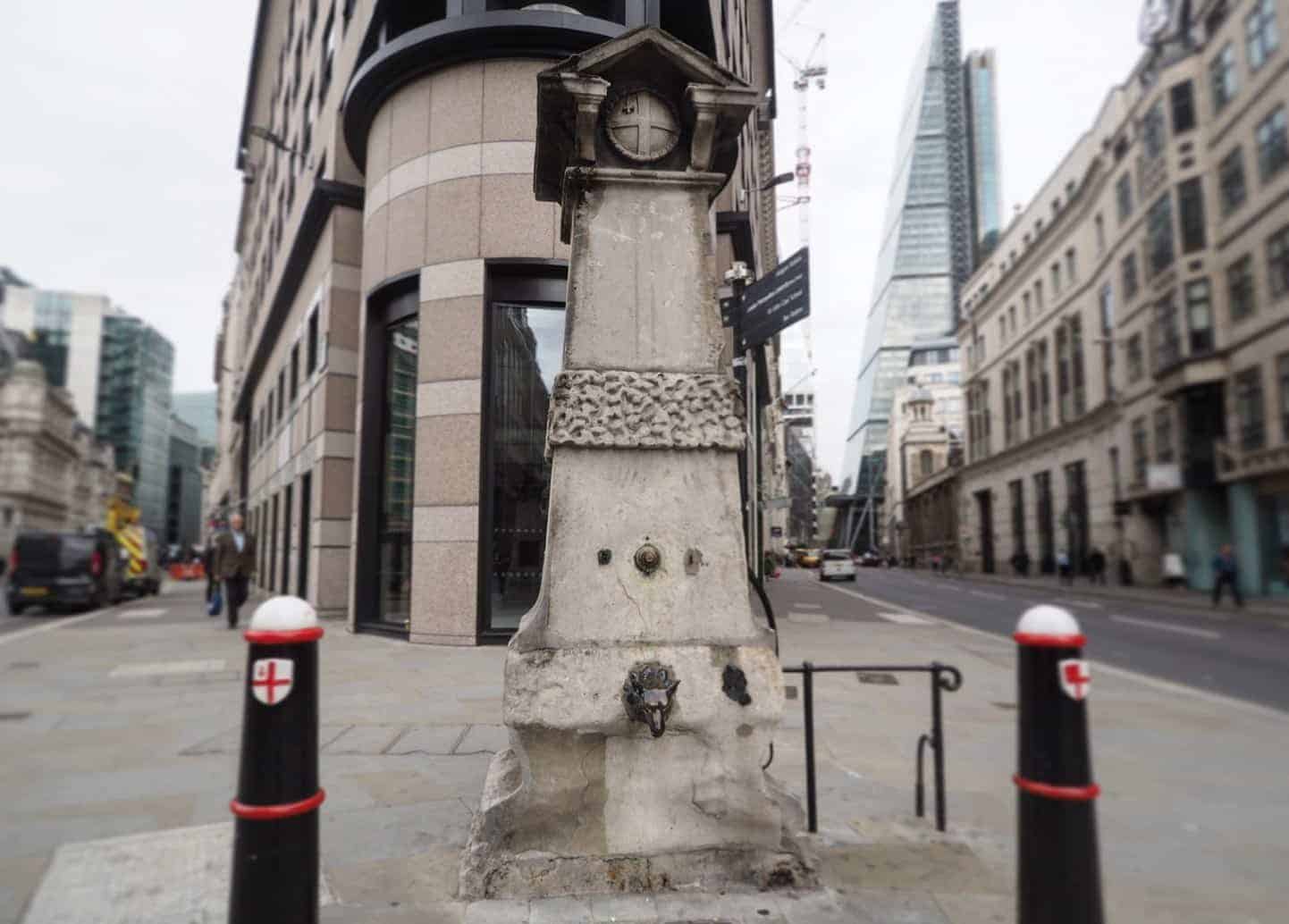
The old Borough of Stepney in 1965 reverted to its old status in becoming part of Tower Hamlets, for it has been a Hamlet of the Tower since Norman times. In the Domesday book, 'Stibenhede' in Saxon times 'Stybbashythe' or 'Stybbas Landing place.
http://hidden-london.com/gazetteer/stepney/
Most of the Landing Places along the River Thames were named after people or families which had inhabited the area. It is assumed by historians the Wapping is named after a leader or herdsman named 'Wappa'
After the conversion to Christianity, Stepney passed into the Bishopric of London. In 958-959 AD, the Bishop was St. Dunstan, to whom Stepney Old Church is dedicated.
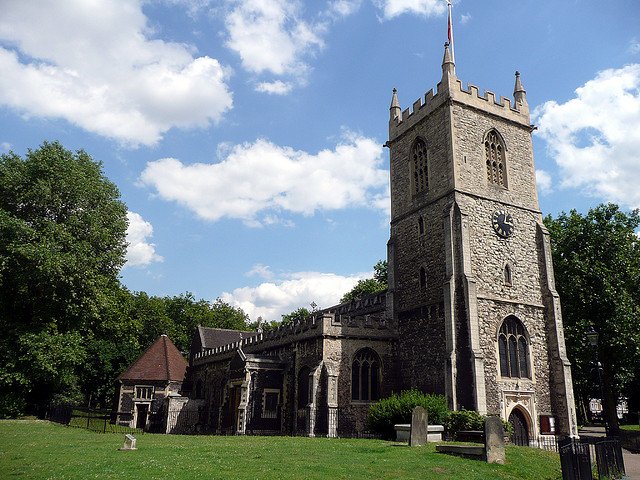
https://en.wikipedia.org/wiki/St_Dunstan%27s,_Stepney
In the Domesday book entries fro Stepney total 83 lines of abbreviated Latin. We were told that in 1907, King Rufus, grievously oppressed the inhabitants of Stepney by building a wall around the White Tower and in repairing London Bridge.
One can only assume that Stepney supplied the labour Force.
In early Norman times, the Tames below the Tower became a Charge of the constable of the Tower and he had certain authority over the various entities of the population, which become known as the 'Tower Hamlets'
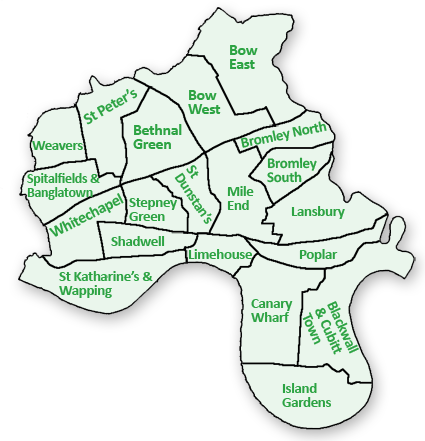
Right down to the 19th Century the Constable of the Tower of Hamlets and could call them out 'for service and preservation of His Majesty's Royal Fort'.
For the full title of the Tower is 'Her Majesty's Fortress and Palace of the Tower of London'. Until its dismantling by Cromwell there was a Royal Palace within the Tower and this persists in its title. Within the precincts was the Tower Sessions, removed by James 1st and the Royal Mint, where the Goldsmith Bankers kept their deposits and where bullion was converted to coins of the realm.
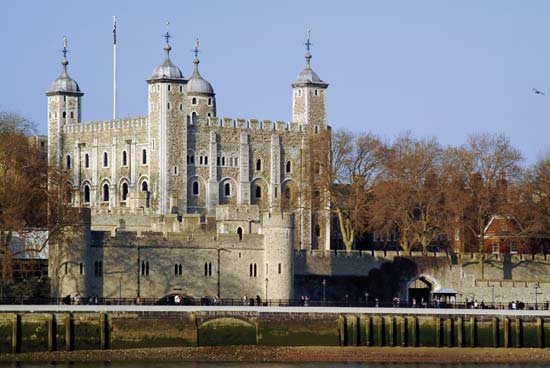
A short walk from the Tower of London to Wapping. Will more than repay the sightseer for his time and trouble.
I don't intend to dwell too long on the Tower of London, but start your walk from the main gate, and with your back to the main entrance you can see the 'Liberty of the Tower. which consists of parts of Tower Hill and Trinity Square.
Within the garden is a stone indicating where the public scaffold stood, between the years 1338 and 1747 some 75 persons were executed here. The better-known site within the Tower was only used 6 times and then only for First Class persons.
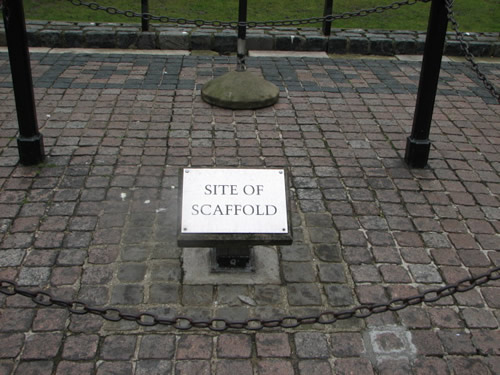
http://www.ancientfortresses.org/executions-beheading-tower-of-london.htm
In the Square can be seen the Headquarters of the Port of London Authority recently disposed of by them but still preserved with Old Father Thames looking out over the river. Nearby is Trinity House, the brethren of which are responsible for Britain,s Lightships, Lighthouses and River Pilots. Trinity House originated in Deptford in Elizabeth's 1st times as the Brotherhood of Trinity Stronde Deptford. In front of these buildings is the Merchant Seamans Memorial to 36,000 men of the Merchant Navy and Fishing Fleets who gave there lives in the Two World Wars and who have no known grave at sea.
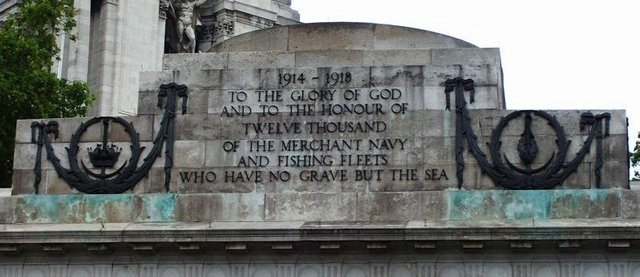
Dominating the skyline is Tower Bridge built by the City of London Corporation at a cost of 1.5 million pounds between 1886 and 1894. At its peak and average of Seventeen ocean-going ships, a day would pass in and out of the upper pool of London through the Bridge
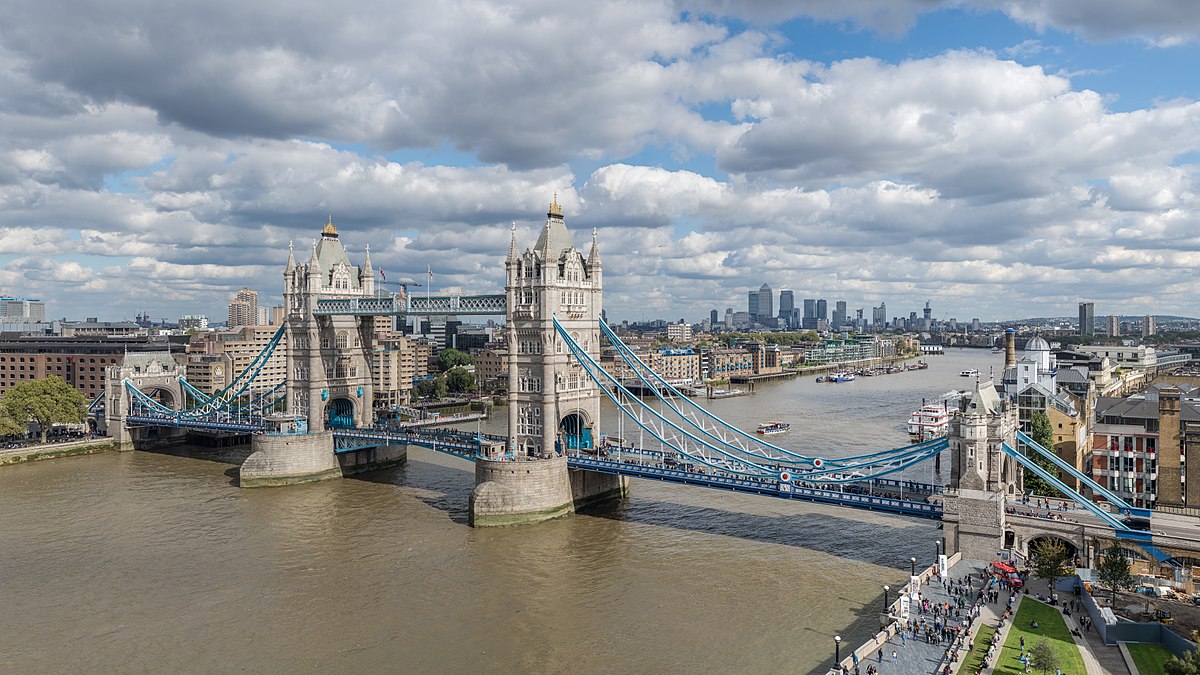
Walk east along Tower Hill towards St.Katherine's Way on the left is the old Roman Wall, before you walk to far, look back towards the tower, known as 'TOC H' Church, the late Rev. P.B 'Tubby' Clayton, C.H. M.C. was the Vicar here.
This Christian movement was started in the first World War behind the Poperinghe Sector of the Western front and flourished into the Worldwide movement that is today. http://www.greatwar.co.uk/ypres-salient/museum-talbot-house-history.htm
Carry on towards Tower bridge and you will pass the Royal Mint, moved here in 1811 from the Tower of London, the original site was a Cistercian Abbey of St. Mary of Grace. This was later pulled down to become a Royal Navy Victualling Yard, then a tobacco warehouse, which was demolished to make way for the Royal Mint.
The original English monetary pound was a Tower Pound of 12 ozs troy silver, which was currently long before the golden pound. In early times all coinage, including pennies were made of silver. https://www.royalmint.com/discover/uk-cities/history-of-london
Just past the Mint on the right was the London World Trade Centre, opening originally in 1964 as the Headquarters of the London Dock and Training School and H.Q. of the Port of London Authority Police. The demise of the London Docks has seen the building which was faced to blend with the Tower of London assumes its new identity.
https://en.wikipedia.org/wiki/Port_of_London_Authority
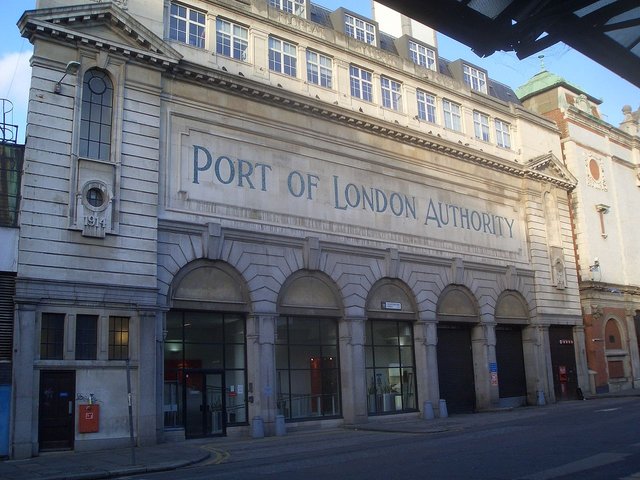
To the right is St. Katherine's Way at the end of which is the Tower Hotel. built at a cost of 8 million pounds, it was the first major hotel to be built in the 20th Century to serve the City of London, with 826 bedrooms it was the part of a bold imaginative scheme to revitalise and redevelop one of the most historical parts of London.
St. Katherine's Dock was originally the site of the Hospital of St. Katherine's by the Tower, an institution founded by Queen Matlida, wife of Stephen, in 1148 and supported by successive Queens a Chapel was built in the mid 14th Century and the Foundation had a religious order of its own, free from control by any other religious order. It controlled its own wharfs and docks and developed its own trade free from the City Guilds. The foundation was empowered to hold its own courts and was responsible for maintaining the peace of the precinct around the area.
After various changes of fortune, the Foundation was moved into 1820's to a new site on Crown land at Regent's Park. Its old site has fallen into disrepair and St. Katherine's Dock Company secured the site.
https://en.wikipedia.org/wiki/St_Katharine%27s_by_the_Tower
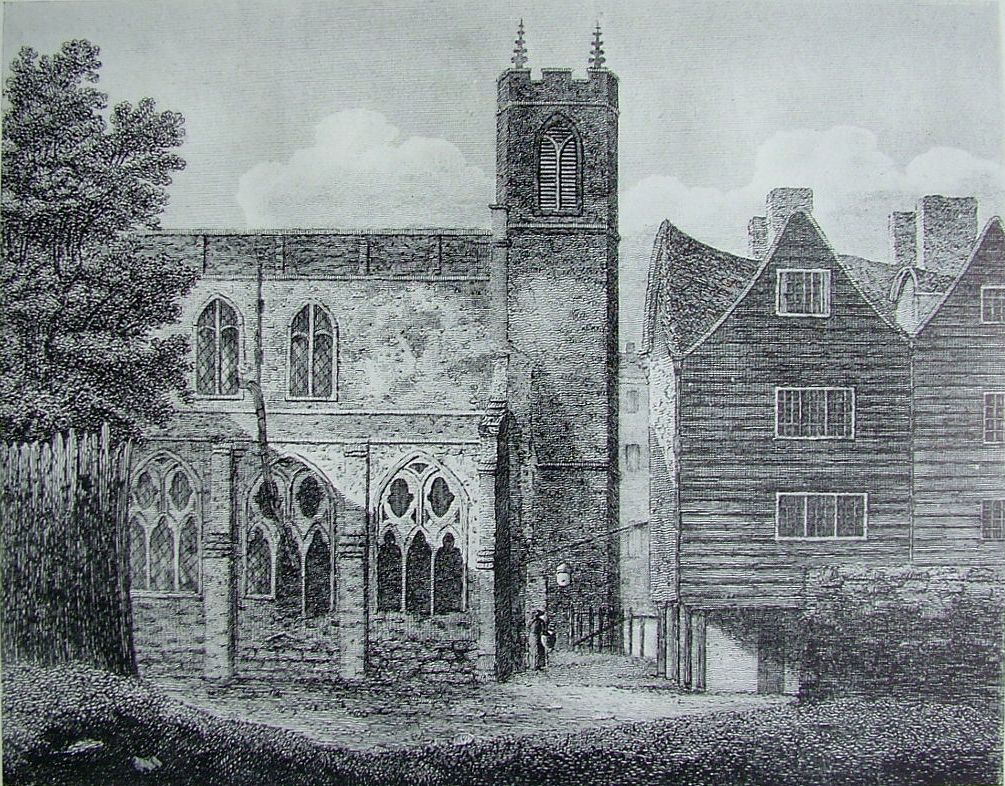
Although London has been a Port since earliest times, it mainly consisted of landing places until the early 17th Century when the first types of Docks where built. The Buccaneering of the late 19th century saw independent Dock companies indulging in a cut and thrust for trade and inter dock wars raging between the various companies. It was inevitable the Port of London Authority was formed and from its inception has planned and implemented the improvement and development of the Port Facilities.

Enter Wapping High Street a short way on the right is 'The Town of Ramsgate' Public House. there has been an inn on this site for over five hundred years. Part of the present building dates back to the 17th century. Originally known as The 'Red Cow' the landlord changed its name to the Town of Ramsgate to attract the business of the Ramsgate Fishermen who made regular trips up the Thames to sell their wares in the London Fish Markets. They landed their wares at Wapping Old Stairs. The Town of Ramsgate saw the Hanging Judge 'Bloody Judge Jeffries' captured in the bar of the inn, he was eventually rescued from a mob and taken into the Tower of London where he died of a wasting disease.
http://www.bbc.co.uk/blogs/wales/entries/5bbb0f04-c7fb-34fe-be1e-c57402198e6d
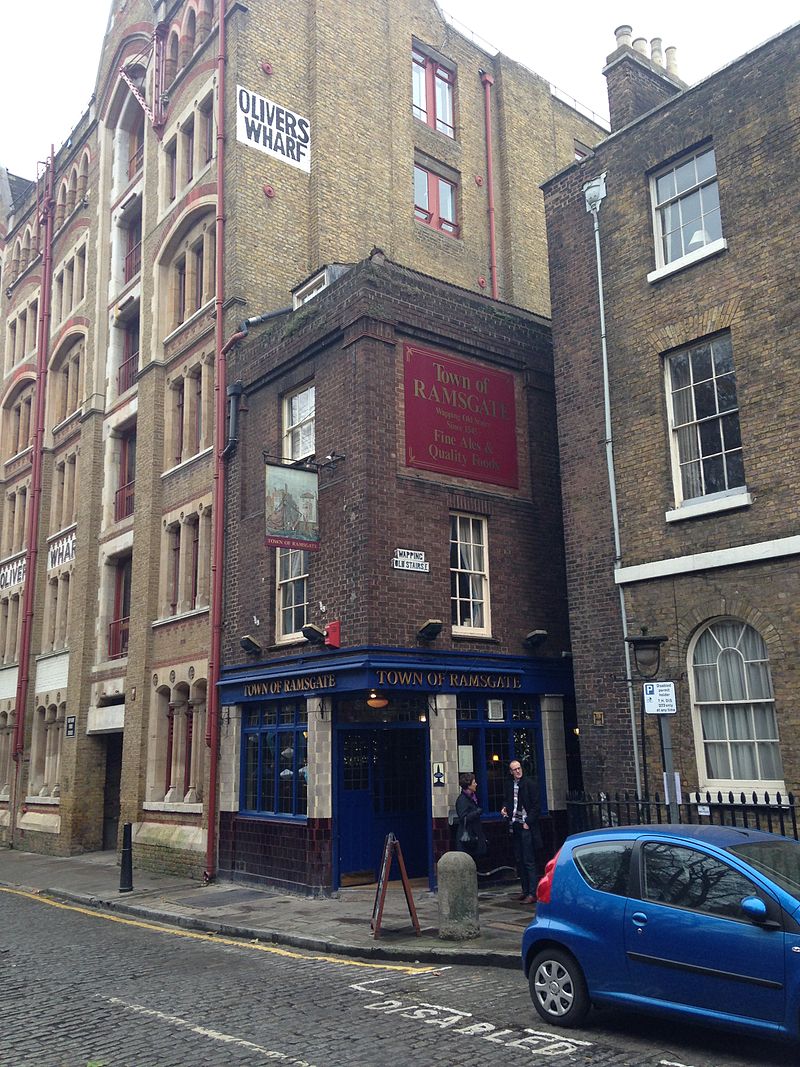
On the right side of the 'The Town of Ramsgate' Public House, is an alley leading towards Wapping Old Stairs, nearby was the site of Execution Dock, where maritime offenders were hanged at low tide, their bodies left to drown at High Tide. It is said to have been for 'Three Tides ton wash over them'.
http://www.historic-uk.com/HistoryMagazine/DestinationsUK/Execution-Dock/
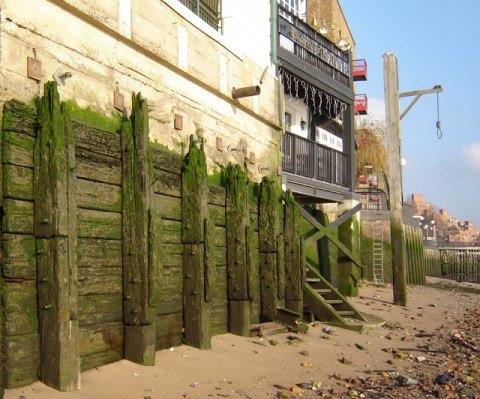
Carry on along Wapping High Street and on the right is located Wapping Underground Railway Station which utilises the Thames Tunnel of Sir Marc Brunel. https://www.britannica.com/biography/Marc-Isambard-Brunel
This was the first Thames Tunnel to carry traffic opened in 1843 it was unique in its construction of the main Tunnel. Along further on the right side is the 'Prospect of Whitby' Public House a venue for tourists, with its display of riverside souvenirs. Captin Cook, discovered Australia was mate of a Whitby Boat laying off this spot when he jumped ship and joined the Royal Navy in 1775, Cook married a Wapping girl, Elizabeth Betts and they lived in Shadwell. Betts Street Stepney perpetuates her name. They later lived at Mile End where there is a plaque proclaiming this fact at No.88 Mile End Road.
More info regarding cook and his life https://books.google.co.uk/books?id=R4kdCAAAQBAJ&pg=PT29&lpg=PT29&dq=Elizabeth+Betts+captain+cook&source=bl&ots=psFByK0Fvz&sig=t2F3Sm9MIIqbkUFJv-z9EHCzj9o&hl=en&sa=X&ved=0ahUKEwjzhP70j_7XAhULCMAKHRXGA0sQ6AEISTAJ#v=onepage&q&f=false
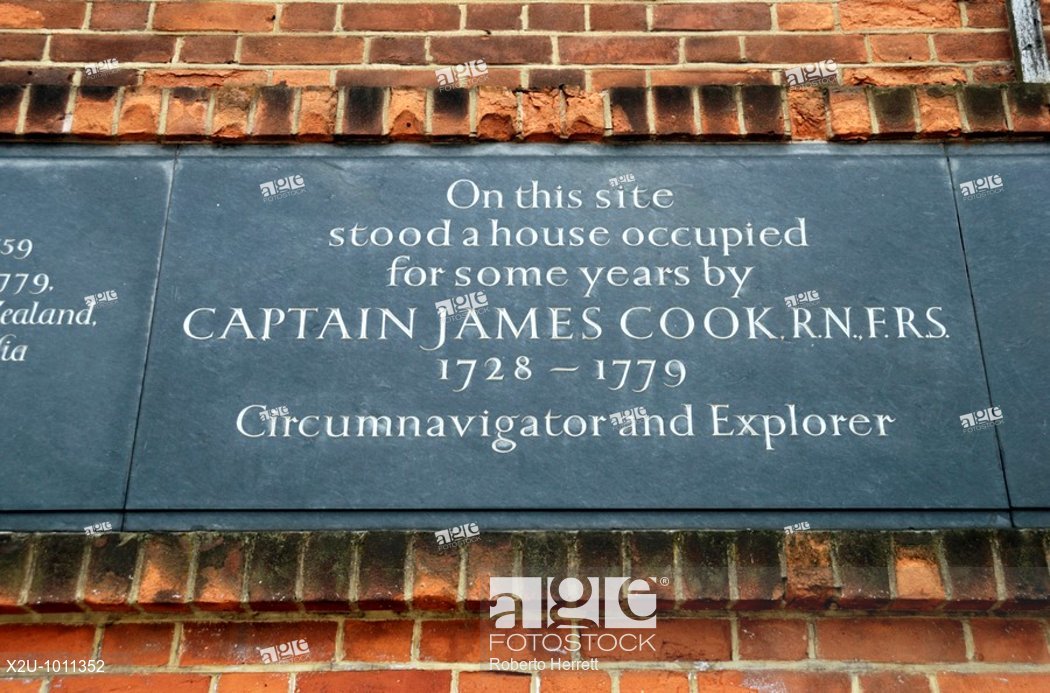
DID YOU KNOW
That in Leman Street is the DAVID GARRICK Public House, named after the famous actor who made his London debut nearby in Goodman's Fields Theatre. Alie Street 1741
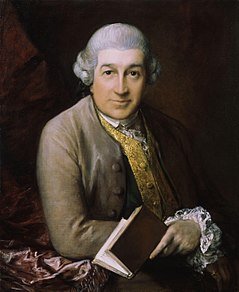
That NURSE EDITH CAVELL was a sister at the London Hospital, Whitechapel Road E.1 the nurse home and Cavell Street E.1 are named after her https://edithcavell.org.uk/
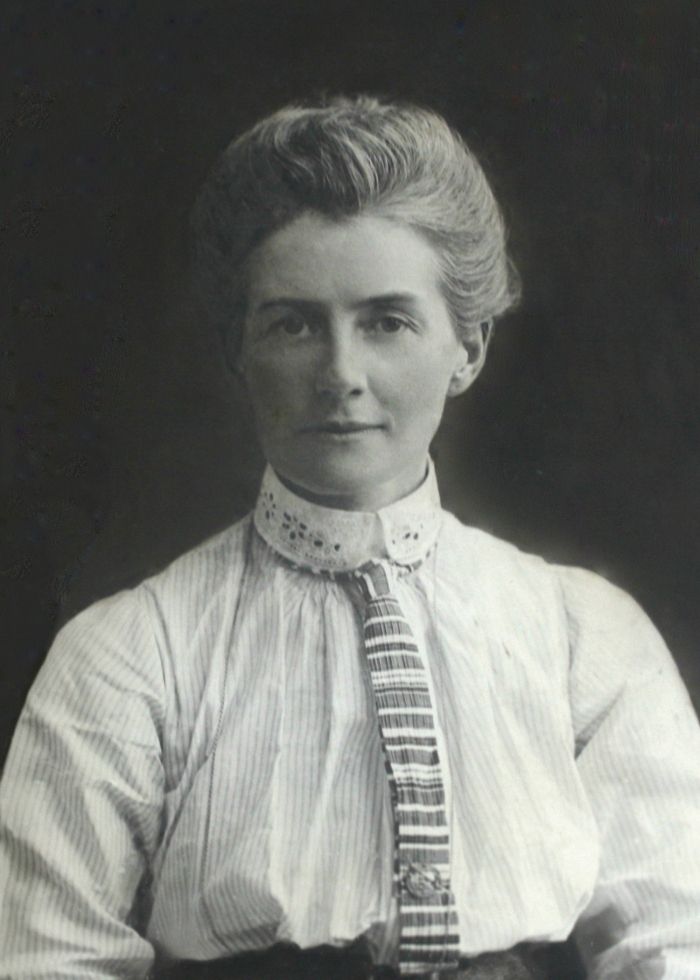
DR BARNARDO'S HOME originated in 1867 at East End Juvenile mission, a tablet commemorates this on the west side of the shopping centre in Oceans estate. In 1879 Thomas John Barnardo a student at the London Hospital started his great work from No.18 Stepney Causeway E.1
https://en.wikipedia.org/wiki/Barnardo%27s
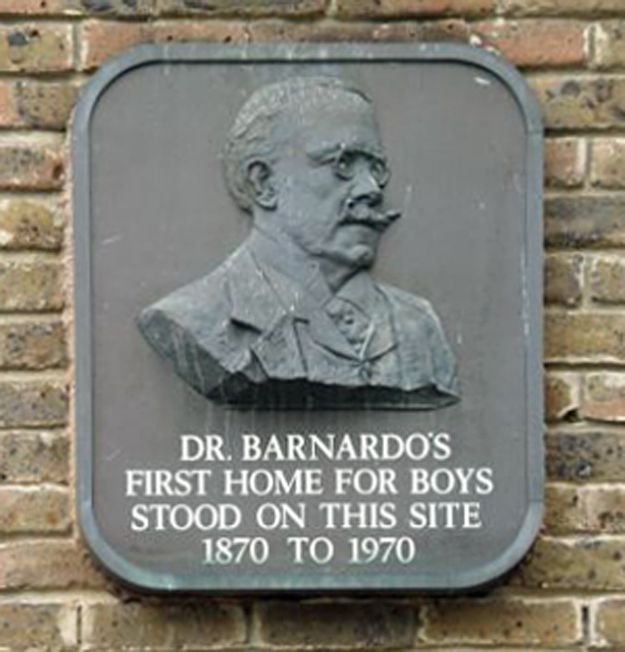
THE FIRST EXPEDITION which successfully colonised Virginia under Captin John Smith sailed from Wapping.
https://lostcityoflondon.co.uk/tag/captain-john-smith/
THAT AT ONE TIME ALL BIRTHS ON BRITISH SHIPS were registered at St. Dunstan's Church Stepney. Still known among sailors as the 'Church of the High Seas'. https://openhouselondon.open-city.org.uk/listings/2497
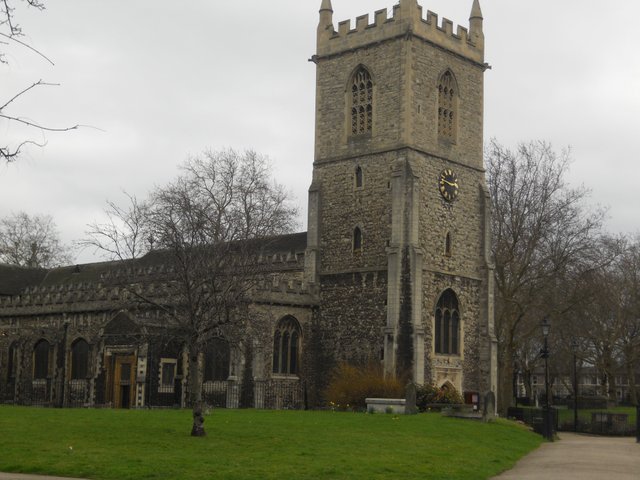
That in the west enclosure in Mile End Road, Stepney, is a plaque and bronze bust inscribed 'HERE WILLIAM BOOTH' commenced the work of the Salvation Army in 1868.
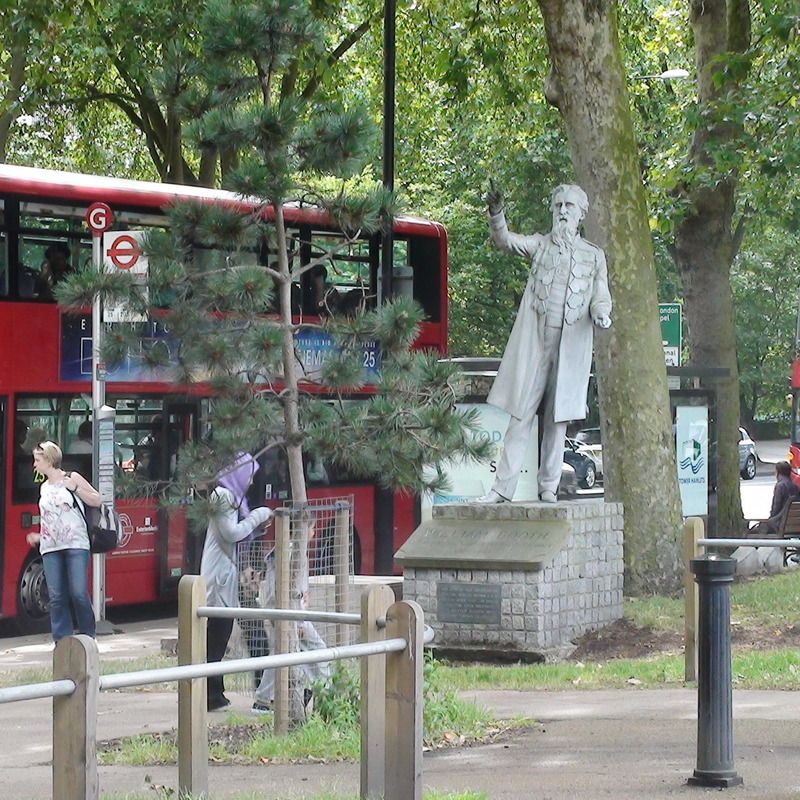
lovely, thanks for the post!
Congratulations @lee287778! You have received a personal award!
Click on the badge to view your Board of Honor.
Do not miss the last post from @steemitboard:
Congratulations @lee287778! You received a personal award!
You can view your badges on your Steem Board and compare to others on the Steem Ranking
Vote for @Steemitboard as a witness to get one more award and increased upvotes!